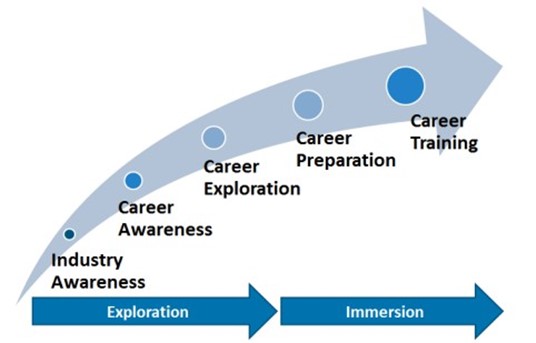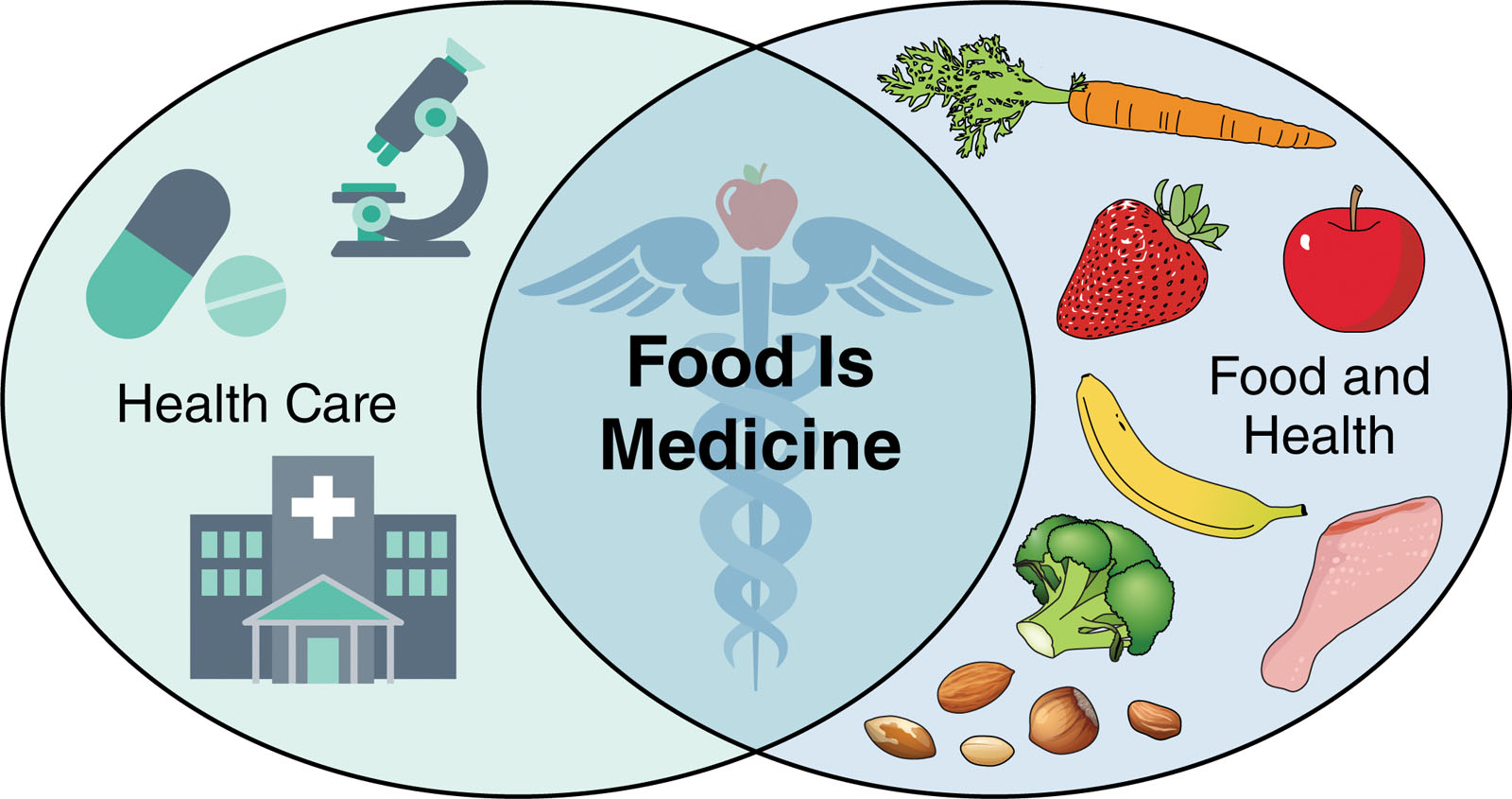By supporting and expanding youth apprenticeship programs, states can create stronger connections across secondary and postsecondary educational institutions, workforce development systems and community-based organizations.
(Download)
Executive Summary
During a time of increased concern over worker shortages, skill gaps and workforce readiness, youth apprenticeship has emerged as an important strategy to prepare the future workforce and meet the needs of the evolving economy, to build consistent and diverse talent pipelines and to improve career prospects and economic outcomes for learners. Governors are uniquely positioned to create, enhance and grow youth apprenticeship programs and the systems that support them. State leaders play a critical role in shaping a policy landscape that facilitates, rather than complicates or impedes, efforts to increase the availability of high-quality youth apprenticeship pathways into family-sustaining careers or further postsecondary education.
Creating this environment requires policies that broadly support career readiness ecosystems by improving connections and alignment across education and workforce systems, as well as policies that specifically support youth apprenticeship programs and facilitate greater student, employer and partner participation.
This state policy playbook lays out several actions that can foster high-quality youth apprenticeship. Specifically, Governors and state leaders can:
- Establish a statewide vision and definitions;
- Establish a statewide governance structure;
- Champion youth apprenticeship;
- Improve systems alignment;
- Use data to inform program creation, implementation and accountability;
- Establish new mechanisms to engage employers;
- Reduce logistical, regulatory and financial barriers to employer participation and
- Leverage existing resources and identify new resources.
YOUTH APPRENTICESHIP
Youth apprenticeship is a strategy for building a more inclusive economy by creating affordable, reliable and equitable pathways from high school to good careers and college degrees. Youth apprenticeship is a structured work-based learning program that connects the educational needs of students with the talent needs of industry.
The National Governors Association Center for Best Practices (NGA Center) is a national partner in the Partnership to Advance Youth Apprenticeship (PAYA), a multiyear collaborative created and launched by New America in 2018 to help states and cities expand access to high-quality apprenticeship opportunities for high school age youth. PAYA aims to improve public understanding and awareness of youth apprenticeship, inform learning across the country by sharing best practices about conditions and strategies needed for successful and sustainable partnerships and support the growth of youth apprenticeship.
This playbook outlines actions state leaders can take to enable and support the expansion of youth apprenticeship within a larger work-based learning and career readiness ecosystem. The actions discussed here can also advance other forms of work-based learning and apprenticeship for youth and adults, in addition to youth apprenticeship. This playbook is one in a suite of resources for policymakers and practitioners that PAYA members have contributed to the field.

Background
Unemployment among high school age youth in the United States, like overall unemployment, skyrocketed during the initial months of the COVID-19 pandemic, reaching a peak of 27% in April 2020, more than triple pre-pandemic levels of around 8%. As hiring and training has resumed and unemployment rates fall, youth unemployment has returned to near pre-pandemic levels, reaching 7.8% in May 2022. While this trend is positive for youth and the economy more broadly, employment is not necessarily leading to long-term family-sustaining career outcomes. The largest share of youth workers are employed in low-wage jobs within the leisure and hospitality industry, and more than half of those youth do not have and are not making progress towards a postsecondary credential or degree to advance their career. In particular, disparities in the availability and quality of youth employment and postsecondary education opportunities persist along gender, race, ability and socio-economic lines, mirroring trends across the broader workforce that many Governors and state policymakers aim to address.
Work-based learning opportunities for young people, and in particular youth apprenticeship, have demonstrated lasting positive impacts on participants’ careers and can be designed to uplift systemically disadvantaged populations. High-quality programs also deliver a return on investment to participating employers by developing a stable pipeline of young, diverse talent who are eager to learn and can drive productivity and innovation. Increasing postsecondary credential attainment has a return on investment for the public and public systems as well, and jobs requiring training beyond high school are growing twice as fast as those without training requirements. Meanwhile, people with a postsecondary non-degree credential experience a higher full-time employment rate and a median annual income that is $15,000 higher than those without.
The benefits of work-based learning opportunities are best realized through the development of high-quality youth apprenticeship programs, which mirror the criteria for high-quality registered apprenticeships. The four elements, as identified through PAYA partners’ research are:
- Paid, on-the-job learning under the supervision of skilled employee mentors,
- Related classroom-based or technical instruction,
- Ongoing assessment against established skills and competencies and
- Culmination in a portable, industry-recognized credential and postsecondary credit.
State leaders, along with the federal government over several presidential administrations, have increasingly recognized the value of youth apprenticeship and have supported its expansion. Federal leadership, state support and local action has led to the number of registered youth apprentices reaching over 100,000 as of 2019. However, the youth apprenticeship landscape across states is variable in design, quality and impact. Barriers to program development, such as lack of a governance structure and misaligned systems, as well as barriers to equitable access and misunderstanding of programs and outcomes, have led to this uneven landscape.
Following New America’s 2017 research into the youth apprenticeship landscape, PAYA identified “career-oriented, equitable, portable, adaptable, and accountable” as defining principles for high-quality youth apprenticeships. States can use these principles as a guiding lens through which to create, enhance and grow youth apprenticeship programs that are impactful, equitable and sustainable.
Developing an education and training ecosystem that is conducive to youth apprenticeships requires leadership and collaboration between multiple state and local agencies, employers and other partners. The complexity of roles and responsibilities provides an opportunity for Governors and other state policymakers to lead in the creation, development and sustainment of programs. State leaders can take the following actions to advance high quality work- based learning and youth apprenticeship opportunities:
- Establish a statewide vision and definitions for work-based learning and youth apprenticeship;
- Establish a statewide governance structure for work-based learning and youth apprenticeship;
- Champion youth apprenticeship and other forms of work-based learning;
- Improve systems alignment across K-12 education, postsecondary education and workforce development to support greater access to opportunity, improved career readiness and equity among high school graduates;
- Use data to inform program creation, implementation and accountability for continuous improvement in outcomes for students and employers;
- Establish new mechanisms to engage employers in work-based learning and youth apprenticeship programs;
- Reduce logistical, regulatory and financial barriers to employer participation and
- Leverage existing resources and identify new resources for youth apprenticeship program development, growth and sustainability.
Establish a Statewide Vision and Definitions for Work-Based Learning and Youth Apprenticeship
Establish a vision
As with all state policy priorities, it is crucial to set a statewide vision for youth apprenticeship, and work-based learning more broadly, that informs and guides stakeholders throughout the development, implementation and improvement process. Without a vision, stakeholders in the youth apprenticeship ecosystem may be wary or unsure of the state’s commitment to and goals for programs.
Conversely, a strong, measurable, time-based vision can provide employers, students and partner agencies with the reassurance and guidance they need to invest and enroll in a youth apprenticeship program. Example goals to achieve a state vision can include the number of completed youth apprenticeships, increased employment rates in subpopulations or youth apprenticeship contribution to state credential attainment goals. Additionally, Governors and state leaders can use the vision and goal setting process to engage stakeholders, identify metrics for equitability and access, and communicate youth apprenticeship’s role in addressing key state goals.
Tennessee– Tennessee’s vision for work-based learning includes career exploration, skills-based education, stakeholder engagement and emphasizes benefits to the state’s communities, families and industries through a robust workforce pipeline.
California– During “Apprenticeship Week” in 2019, Governor Gavin Newsom reiterated the vision of training 500,000 new earn and learn apprentices by 2029. The Department of Industrial Relations Division of Apprenticeship Standards (DAS) has been tasked with administering and regulating apprenticeships within the state, including youth apprenticeships. DAS is collaborating with the California Community Colleges Chancellor’s Office and the state Department of Education to accomplish this vision.
Develop shared definitions
States can lead the effort towards a more aligned landscape by codifying definitions for each element along the work-based learning continuum, including youth apprenticeship and related terms. These definitions, guided by the PAYA Principles, will articulate parameters and standardize expectations for apprentices, partners and employers. Additionally, they will help to clarify the pathways and connections between pre-apprenticeship, youth apprenticeship, registered apprenticeship and other work-based learning opportunities.
Codifying these terms will allow states to place emphasis on quality, equity and scalability of youth apprenticeship programs while creating a shared language for cross agency collaboration. The U.S. Department of Labor (USDOL) has published several frameworks that can assist states when creating definitions and pathways.
Kansas– Kansas provides a Work-Based Learning Digital Reference Guide complete with definitions and supplementary resources to support the adoption of different work-based learning types, including youth apprenticeship.
Idaho– Next Steps Idaho, a statewide initiative to support Idahoans through their education, training and career journey, defines work-based learning opportunities in “Learn Through Work” and “Learn at Work” subcategories. The “School to Registered Apprenticeship” definition, targeted at students 16 years old and above, is within the “Learn at Work” subcategory.
Establish a Statewide Governance Structure for Work-Based Learning and Youth Apprenticeship
A cross-agency governance structure is crucial to aligning the necessary systems to build a foundation for work-based learning and youth apprenticeship opportunities. Challenges can arise from a state system that is not properly synchronized, including misunderstanding of roles and responsibilities, duplication of resources and services, and misalignment of initiatives, investments and goals.
Developing a sustainable coalition and governance structure to guide work-based learning, and youth apprenticeship’s position within this structure, is a key first step in creating a responsive and supportive ecosystem. Governors play a critical role in instituting a collaborative governance approach and can identify and designate a diverse set of leaders to inform the process and lay the foundation.
Whether codified through executive order, legislation, policy or formal addition of the responsibility to an existing cross-sector partnership, the body’s membership should reflect the state’s makeup and goals for work-based learning and youth apprenticeship. When determining the governance body, it is important to consider which vehicle will support long-term sustainability. Across the U.S., lead agencies include the state board of education, department of workforce development, state community college systems and others.
Indiana – The Indiana Office of Work-Based Learning and Apprenticeship was established by Governor Eric Holcomb via Executive Order in 2018 as part of his NextLevel Agenda. The office serves as the development, coordination and implementation apparatus for work-based learning programs across secondary, postsecondary and career technical education and training.
Wisconsin – The Wisconsin Department of Workforce Development (DWD) is the state’s youth apprenticeship governance agency. DWD establishes guidelines and standards, considers local youth apprenticeship applications, approves statewide program curriculum and continually assists and monitors local programs.
Champion Youth Apprenticeship and Other Forms of Work-Based Learning
Governors and state leaders have the platform to communicate the potential that work-based learning has, and youth apprenticeships specifically, to address numerous policy priorities including economic development and mobility goals. Whether by attending events that showcase youth apprentices in the workplace, hosting graduation ceremonies, elevating model employers, publishing press releases and op-eds, connecting related policy initiatives to work-based learning solutions or other soft leadership actions, Governors can elevate the awareness of programs throughout business and student communities alike. They can also promote these opportunities by hosting youth apprentices within their own state offices or agencies. Through these actions, Governors will exhibit the state’s commitment to equitable work-based learning initiatives, which can attract the partners necessary for program success.
Maryland – The Maryland Apprenticeship and Training Program, under the Department of Labor, has published and disseminated numerous youth apprenticeship and work-based learning marketing videos targeted at business, students and partners.
Washington – Governor Jay Inslee has been a vocal champion of Washington’s youth apprenticeship and work-based learning opportunities through a variety of communication channels to reach the public, including tweets, speeches, videos and press releases.
Improve Systems Alignment Across K-12 Education, Postsecondary Education and Workforce Development to Support Greater Access to Opportunity, Improved Career Readiness and Equity Among High-School Graduates
Articulate a career readiness continuum
State leaders can increase student awareness of the opportunities available to them through youth apprenticeships by engraining high quality work-based learning programs throughout the educational system, as defined in the NGA Center for Best Practices’ “State Strategies to Scale Work-Based Learning.” Governors and states can do this by creating a progressive continuum of career readiness in the classroom from kindergarten through postsecondary opportunities. Moving from career awareness, to exploration, to preparation and finally career training helps educate and prepare students for their entrance into the workforce through youth apprenticeship, career technical training or higher education.
Providing funding for career guidance and counseling within schools that is specifically dedicated to educating and supporting students along their career exploration journey will help prepare young people for apprenticeships and their career. With these assets, school systems can be a resource hub and champion for students and their parents or guardians while promoting equitable access to programs that may otherwise not be accessible to key populations.
Hawai‘i – Hawai‘i developed a work-based learning continuum in collaboration with employers that emphasizes the development of technical and employability skills and graduating from high school with industry-recognized credentials.
Nebraska – The Nebraska Workplace Experiences Continuum is organized into three tiers, moving from awareness to exploration and into work-based learning strategies. Coupled with the Career Readiness Standards, Nebraska emphasizes the repeated use of these practices with increasing complexity as students progress through their educational pathway.
Promote smooth transitions for students across work-based learning and postsecondary opportunities
For programs to have the greatest impact possible, there are additional educational policies states can support to better align systems and smooth transitions for students taking advantage of work-based learning opportunities. These include state and system recognition of credit for student learning that takes place with the employer. This recognition can be applied to K-12 course and graduation credit and be made more easily transferable to a postsecondary program or institution’s degree requirements.
Leaders can also advocate for appropriate dual enrollment funding and school- and student-based incentives for credential attainment, which can strengthen the scaffolding that supports transitions across work-based learning and postsecondary opportunities. State-led educational institutions can lead by clarifying and increasing transparency of credit transferability as well as by standardizing the articulation of Associate in Applied Science (AAS) degree to Associate of Science (AS) degree or credits towards a Bachelor of Arts degree.
New Jersey – The Department of Labor and Workforce Development provided grant funding to support the formation of registered apprenticeship programs that integrate paid on-the-job learning with credit-bearing classroom education. The grant encourages institutions of higher education to conduct prior learning assessments for students who completed a registered apprenticeship program and award college credits retroactively.
South Carolina – South Carolina’s Work-Based Learning Implementation Guidelines manual assists educators in building and implementing work-based learning programs that prepare students for a seamless transition from secondary education to postsecondary education, the military or directly into the workforce.
Update education requirements and reduce barriers to student participation
A number of common education requirements and restrictions, such as student seat time, teacher of record, graduation requirements, attendance reporting and more, can interfere with a school system’s ability to offer apprenticeships to their students. For many school systems, funding is tied to these metrics, which can make it challenging for administrators to be innovative and look beyond traditional classroom structures for learning opportunities. The U.S. Department of Education (ED) published, “Expanding Work-Based Learning Opportunities for Youth” in 2021 with opportunities to address barriers to youth apprenticeship, including ways to update educational policies and practices.
While updating education-based requirements and restrictions, states can also reduce the barriers students face when considering participation in a youth apprenticeship program. For example, states can examine how youth apprenticeship might affect eligibility for other public resources, such as scholarship funding or public benefits, and eliminate issues that discourage equitable participation.
New Hampshire – The Learn Everywhere program allows students to earn credit for learning outside of the traditional classroom by authorizing outside entities to serve as training providers within the educational system and requirements.
New York – The Work-Based Learning Manual provides K-12 schools with an outline of how each work-based learning experience meets the educational requirements of the state and can be applied as course credits.
Use Data to Inform Program Creation, Implementation and Accountability for Continuous Improvement in Outcomes for Students and Employers
Use data to inform work-based learning and youth apprenticeship program development
Understanding the state economy, now and in the future, requires insights into a multitude of sectors, subjects, trends and more. Developing, maintaining and coordinating a robust data collection and analysis system can equip state actors and partners, specifically local education and workforce leaders, with the insights necessary to make informed and forward-looking decisions.
Adopting a data collection policy can supply the state and partner organizations with the information required to create youth apprenticeship programs that respond to the needs of the state, students and employers while also monitoring and prioritizing equitable outcomes.
Utah – The Utah Data Research Center integrates higher education, technical college, K-12 education, health and workforce data to provide agencies with an intersectional understanding of individuals as they progress through the educational system and into the workforce.
Collect and share youth apprenticeship data
It is important that data be used by states and partners to inform the creation of programs as well as to analyze and improve youth apprenticeships once they have been launched. Advance CTE’s “Improving Youth Apprenticeship Data Quality: Challenges and Opportunities” publication provides insights on what to measure, how to build the infrastructure, improve access to the data as well as how to scale the collection process statewide. The PAYA Data Framework can also help leaders identify relevant, actionable information and is a guide to support efforts to build data systems that monitor the effectiveness of youth apprenticeship programs.
Throughout these resources, it is noted that there are several challenges with sharing data and insights across state agencies and with partners. Thus, it is important that Governors and state leaders adopt policies to lead and align data collection and sharing.
Michigan – The Michigan Apprenticeship Dashboard provides regional and occupational data on registered apprenticeship in Michigan, including the number of active apprentices and the occupations and industries they are part of. The publicly available dashboard allows users to easily view youth apprenticeship data as its own subcategory.
North Carolina – The ApprenticeshipNC Annual Report provides a yearly debrief of apprenticeship data, which includes youth apprenticeship data on overall and industry-specific participation.
Develop an accountability and continual improvement framework
States can hold youth apprenticeship program partners accountable and emphasize continual improvement through specific steps or improvements in their data collection and analysis methods. Accountability in youth apprenticeship can be particularly challenging since the model sits at the intersection of K-12 education, higher education and workforce systems. First and foremost, states can determine who is responsible for tracking outcomes for employers, students and partners. State leadership, using legislative or regulatory measures, can standardize reporting expectations, codify accountability measures and identify expected program outcomes for participants and partners. States may also consider aligning these measures with those they are already measuring and reporting on under the Strengthening Career and Technical Education for the 21st Century Act (Perkins V) and the Workforce Innovation and Opportunity Act (WIOA).
Assessing programs for equity, impact and outcomes can provide best-practices, allow lower-impact programs to be held accountable and can grow partner and participant trust. Lead agencies, educational institutions, employer and industry partners and intermediaries can use New America’s Youth Apprenticeship Quality Assessment Tool to identify ways to improve the youth apprenticeship programs in their state. Advance CTE’s publication on data and accountability in youth apprenticeship programs is also a valuable resource for states as they create an accountability framework.
Washington – Career Connect Washington serves as Washington’s accountability office by creating agreements with and measuring the performance metrics of state youth apprenticeship program partners.
Establish New Mechanisms to Engage Employers in Work-Based Learning and Youth Apprenticeship Programs
Maintaining relationships with employers is imperative to many state programs and initiatives, particularly in work-based learning and youth apprenticeship. It is important that state leaders, particularly those within the governing structure, establish systems for ongoing, mutually beneficial relationships with industry groups and employers. Mechanisms to do this include routine conversation, advisory roles or stakeholder meetings to develop trust and responsiveness with participating employers. Sector strategy frameworks offer a model for building this type of industry partnership infrastructure to foster close collaboration with groups of employers within a particular industry in a region, to gain deep understanding of their shared talent needs that can then inform the development of training and placement programs with local institutions.
A strong employer engagement strategy will also increase awareness of available opportunities and the positive impacts of youth apprentices on their businesses. Several studies have indicated high employer satisfaction and a positive cost-benefit analysis resulting from apprenticeships. Employers should be made aware of the research supporting work-based learning and apprenticeships for their bottom line.
Oregon – Oregon Apprenticeship has business case-studies as well as a publicly available return-on-investment calculator that calculates the financial impact that an apprentice can have on a business’s bottom line.
Tennessee – The Department of Labor and Workforce Development offers employers the opportunity to review their workplace practices to determine if working conditions are conducive to a youth apprenticeship program. A consultant from the Labor Standards Unit assists the employer with paperwork and program development.
Reduce Logistical, Regulatory and Financial Barriers to Employer Participation
Establish or fund youth apprenticeship program intermediaries
Engaging employers, high schools and postsecondary institutions is necessary for any youth apprenticeship program to be effective. Unfortunately, employers and educational institutions do not always interact at the level required to develop a program, let alone have the capacity to execute and administer it. In many cases intermediary agencies or organizations serve the role of convener, coordinator, program planner, administrator and evaluator. The intermediary serves students, educational institutions, as well as employers, and is crucial in the promotion of high-quality, scalable and equitable youth apprenticeship programs. While no two intermediaries play the exact same role, Education Strategy Group’s resource on the critical role of intermediaries provides states with examples and insight into the creation, funding and execution of a successful intermediary. As discussed in Advance CTE’s “Leveraging Intermediaries to Expand Work-based Learning,” states have also had success funding local, or district-level intermediaries, which can help ensure stability and sustainability.
Rhode Island – PrepareRI is the umbrella initiative for college and career readiness work in the state and represents a strategic partnership between the Rhode Island government, private industry leaders, the public education system, universities and non-profits across the state. The PrepareRI interagency team ensures apprenticeship programs managed by its agencies and partners are aligned and coordinated.
Iowa – Iowa Intermediary Network, funded by the state at $1.5 million per year, has coordinators who connect students, parents and employers with career awareness, career exploration and workplace learning opportunities in a variety of career clusters.
Modernize regulations to allow for youth participation in apprenticeships in safe work environments
Workplace regulations are often cited as barriers to employer involvement in youth apprenticeship programs since in many cases they may not be updated to reflect modern working conditions or may be misunderstood by employers. Regulations such as age-restricted placements, working condition standards and occupational hazards regulations can unnecessarily hinder industries and employers from considering and joining youth apprenticeship programs. In many cases, these regulations may not reflect the vastly improved workplace safety in many industries. During and after program creation, states can connect with employers to understand actual and perceived barriers to youth apprenticeship to then assess and implement the necessary changes to statue, regulations and guidance while also preserving guardrails for safety, equity and working conditions. Examples of states reducing the regulatory burden can be found in the USDOL “High School Apprenticeships: A Guide for Starting Successful Programs” and in the updated guides to child labor laws.
Kentucky – The Kentucky Department of Education has a brief describing what regulations apply to student workers with the caveat that limited exemptions for 16- and 17-year-old apprentices and student-learners may apply.
Ohio – Ohio’s laws restricting labor by minors explicitly exempts students participating in CTE, STEM, dual credit or apprenticeship programs. This has opened doors for more employers to bring students participating in such programs into their workplaces.
Provide financial incentives and assistance to employers
Employers can receive additional motivation to become involved in a program in the form of state tax credits, financial assistance with apprentice salaries or government funded insurance for student employees. While these incentives are not a silver bullet to drive employer participation and should be one part of the approach to entice employers, they can convey the state’s commitment to programs that are beneficial to employers and students. Additionally, incentives can be tailored to and targeted at key industries or populations to improve equity and access to family-sustaining occupations and careers that have historically been unavailable to certain populations. Apprenticeship.gov offers a list of state tax credits and tuition supports for apprenticeships that includes these types of incentives from 30 states.
Georgia – House Bill 402 (2016) authorizes reimbursement to employers for liability insurance premium increases when an organization hires work-based learning students age 16 or older.
Guam – Guam offers a tax credit offset to businesses on their privilege tax equal to fifty percent of all eligible costs paid or incurred by the business to train an apprentice, including those 16-18 years old.
Leverage Existing Resources and Identify New Resources for Youth Apprenticeship Program Development, Growth and Sustainability
Use and enhance state funding
Funding for youth apprenticeships often comes in the form of limited-scope grants, which can hinder a program’s ability to recruit partners, establish legitimacy or to meet identified needs such as improving equity. Instead, states can encourage the braiding of available funding streams from the federal, state and local levels, along with philanthropic funding. Costlier aspects of youth apprenticeship development that would benefit from having dedicated funding resources include capacity to support stakeholder coordination, student advising, postsecondary related training instruction (RTI), support services and more. Governors and state legislatures can promote and sustain impactful programs by also dedicating state dollars to intermediary agencies and pilot programs.
States can incentivize K-12 schools to engage in and promote youth apprenticeships and work-based learning opportunities by offsetting administrative costs and rewarding those whose students’ complete programs. Postsecondary institutions that participate can similarly be incentivized through funding for training programs, and by offsetting costs associated with RTI.
To increase student participation, as well as equity in enrollment and outcomes, states can offer scholarships or financial incentives to students who may otherwise be unable to enroll in a program. States can also identify areas with limited work-based learning opportunities and leverage partnerships and funding to increase access for students in those regions.
Colorado –The Career Development Incentive Program provides financial incentives for school districts and charter schools that encourage students to complete qualified industry credential programs, internships, residencies, construction pre-apprenticeship or construction apprenticeship programs or qualified Advanced Placement courses.
South Carolina – The Department of Education’s Education Improvement Act Fund Expenditure Guidelines states that Work-Based Learning funds can be expended to fund and support a Work-Based Learning Coordinator.
Leverage available federal funding
As state policymakers and practitioners consider how to create and refine high-quality youth apprenticeships, understanding how to leverage federal funding streams and related resources is paramount. The USDOL “Federal Resources Playbook” identifies multiple funding streams, through the Department of Labor, Education, Transportation and more that can be used towards work-based learning. WIOA also provides multiple funding opportunities for employers and intermediaries who administer apprenticeship programs. Apprenticeship USA’s publication “Using Workforce Funds to Support Apprenticeship” outlines funding options specifically for WIOA Youth Formula Program. As mentioned above, there are ongoing federal grant programs available to states to implement apprenticeship programs. These include the State Apprenticeship Expansion, Equity, and Innovation Grants (SAEEI), the Youth Apprenticeship Readiness Grant (YARG), Apprenticeship Building America Grant (ABA) and others.
Federal programs that states can use to support youth apprenticeships. Note that this is not exhaustive and there may be other funding streams that states can leverage.
Youth Apprenticeship Readiness Grant (YARG) – These grants allow educational entities, including traditional, alternative and non-traditional schools and programs that serve out-of-school youth, school boards, workforce boards, employers, workforce partners and other apprenticeship intermediaries, to partner to develop and establish new apprenticeship models for youth or expand existing apprenticeship programs for youth. Grant recipients seek to expand opportunities to prepare 16- to 24-year-old registered apprentices for careers in industries including manufacturing, information technology, cybersecurity and healthcare
State Apprenticeship Expansion, Equity, And Innovation Grants (SAEEI) – These grants bolster states’ efforts to expand programming and inclusive recruitment strategies to attract a diverse workforce. They aim to develop partnerships with new industries and non-traditional occupations, including industry sectors hardest hit by the pandemic, and align Registered Apprenticeships with other work-based learning opportunities within state education and workforce systems.
Strengthening Career and Technical Education for the 21st Century Act (Perkins V) – Perkins V allocates approximately $1.3 billion in federal funds annually to support CTE programs at the state and local levels that provide work-based learning experiences. Perkins V allows states to use certain funds to establish statewide partnerships between middle and high schools, higher education institutions, employers and partners.
Workforce Innovation and Opportunity Act of 2014 (WIOA) – Work-based learning is a prominent feature of WIOA that requires the use of at least 20% of local youth formula funds for work-based learning. On-the-job training can be supported with WIOA youth program funds and can be utilized to support youth participants in apprenticeship programs. Pre-apprenticeship is also an identified program element for WIOA youth programs.
Every Student SucceedsAct of 2015 (ESSA) – ESSA gives states an opportunity to align education, workforce and economic development systems. State plans for higher education must include support for work-based learning experiences that provide students with in-depth interaction with industry professionals. Under ESSA, states can also decide to include access to or completion of work-based learning as an indicator of school quality or student success for state education assessment purposes.
Conclusion
State leaders increasingly recognize youth apprenticeship as an effective method of preparing a diverse set of young people for further education and high-growth careers and to build more consistent talent pipelines for employers. Without state policies that enable and support youth apprenticeship, programs and systems across the U.S. are likely to remain unaligned and will, at best, meet varying degrees of success while the country risks falling behind its global peers in labor force participation, innovation and economic competitiveness.
By supporting and expanding youth apprenticeship programs, states can create stronger connections across secondary and postsecondary educational institutions, workforce development systems and community-based organizations. Building these connections will benefit other education and talent development efforts outside of youth apprenticeship as well. Additionally, high-quality programs can spur important peripheral benefits for a community such as bringing more people and money into the regional economy, increasing industry competitiveness and breaking cycles of generational poverty and inequitable access to economic opportunity.
To learn more about the Partnership to Advance Youth Apprenticeship, please visit: https://www.newamerica.org/education-policy/partnership-advance-youth-apprenticeship/
Acknowledgements
The NGA Center would like to thank PAYA national partners, grantees and network members for their expertise that informed this resource. A special thank you to New America, the lead organization of PAYA, for their sponsorship and leadership in the ideation, development and execution of this publication. This playbook was prepared by Jordan Morang, policy analyst at the NGA Center, Rachael Stephens, program director for workforce development and economic policy at the NGA Center, with guidance and review from Taylor White, national director of PAYA and senior policy advisor with the Center on Education & Labor at New America, and Lul Tesfai, senior policy advisor with the Center on Education & Labor at New America. The authors thank colleagues Rachel Hirsch, Jack Porter, Seth Gerson and Catherine Van Ness for their contributions to this resource.












